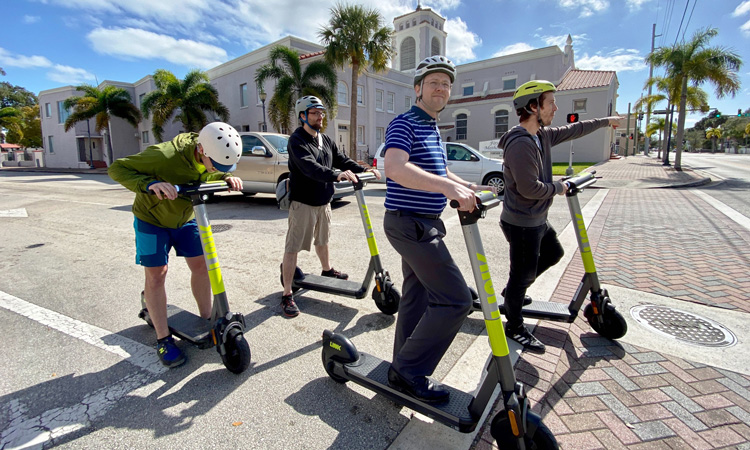Business, General
Vertical integration in micromobility
1 July, 2020
Some recent acquisition news in the shared micromobility space underlined the current acceleration of the vertical integration among product and service providers (Micromobility Industries recently organised a webinar on this very topic). Building the best vehicle or optimising the operation processes seem not to be enough… let’s try to explain it.
Controlling the whole solution
Shared micromobility solutions are composed of three main bricks: the vehicle, the IoT module, and the software. The cement is the communication between the bricks, and in order to build your solution, you have to develop strong bricks and cement designed to match with your bricks characteristics.
Ok, you get it, enough with the analogy. Let’s go back in 2018 for a self-speaking exemple: it is the e-scooter boom, tens of thousands e-scooters are suddenly hitting the streets. All of them were off-the-shelves Xiaomi M365 or Segway Ninebot ES2/4, a great -and cheap- way to test the appetence of riders for this new mode. But it did not take long before the main US operators Lime and Bird insourced the vehicle and IoT development: Lime launched its Gen 3 model on October 2018, Bird its Bird Zero on May 2019. With high financial capacities, it was the fastest choice to improve unit economics and turn the business profitable.

The release of the best-seller Okai ES400 in mid 2019 has been a game-changer, largely adopted by operators. Voi even abandoned its in-house designed Voiager models to stick with the bomb-proof Okai one.
But in-house vehicle development is not dead. Some smaller companies are still betting on in-house design and R&D as a differentiator: pony and its two-seater e-bike, or Superpedestrian and its self-diagnosis scooter have chosen to provide unique features to find their place in the sun. Bolt recently unveiled its own e-scooter designed by its Estonian neighbour Stigo (Stigo’s CEO is now the Head of Vehicles at Bolt) with apparent cost-savings and integration goals… but launched an e-bike made in China by Hongji bike.

The same happens with IoT. Last month, speedelec sharing operator Bond Mobility acquired IoT company e-motionlabs to “strengthen BOND Mobility as a full-stack technology company with smart vehicle design, engineering and connectivity expertise”. Going in the other direction, Estonian IoT competitor went from the communication expertise to the vehicle design with its Co-scooter launched in May 2019.
Next step: operations
Once you have your well-designed solution, you have two choices: selling it to some operators or operating by yourself. By acquiring 13 years-old bike-share operating company Zagster a month ago, Superpedestrian chose the latest. As CEO Assaf Biderman puts it in the Micromobility Industrie’s webinar:
“One you’ve tackled the main challenges of unit economics with your vehicle -maintenance, charging…- operation is a profitable business: We’ll earn as much money by selling 150,000 scooters [to an operator] in a year than by operating 15,000 of them”.
Link, the company’s shared scooter service brand, gathers Superpedestrian’s technological expertise with Zagster operational knowledge and experience.

Comodule also launched its own shared scooter service called Tuul, and plans to operate in different EU cities (they applied in Paris), following Superpedestrian footprints.
To sum up, you have to manage all the parts of your solutions, and the communication in-between to survive in the shared micromobility jungle. Then with your high-end home-designed solution which addresses production costs goals, user experience or design quality requirement, and operational challenges (charging, maintenance…), operations become profitable. So let’s do it by yourself!
Within the industry, companies are therefore insourcing the whole value chain (Bird, Lime…) or acquiring the missing links through acquisitions, mergers or partnerships. More should come to take advantage of each of the company’s expertise.